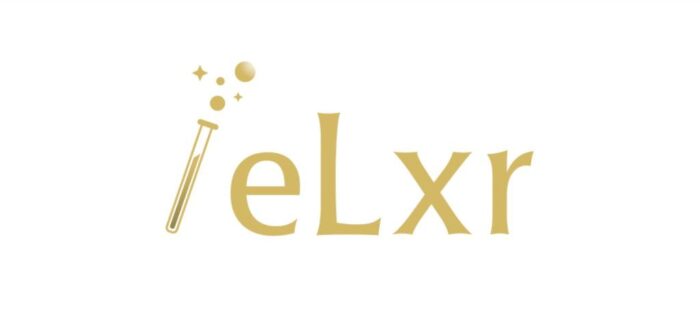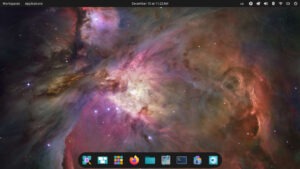Wind River’s new Debian-based server and edge Linux distribution was born out of a need to create a CentOS replacement that would remove Red Hat from the equation.

Wind River, the Alameda-based software company that once upon a time was part of Intel, on Tuesday announced eLxr Pro, a commercial Linux offering tailored for enterprise use.
In a way, this release represents something of a new chapter in the brouhaha that started in 2020 and which resulted in several new Linux distributions after Red Hat ended support for CentOS, the community clone of its commercial operating system.
This time, however, the new distro isn’t based on Red Hat Enterprise Linux, but on Debian. It’s exactly the same software as eLxr, a Linux distribution that Wind River released back in July which is based on software that was initially developed for StarlingX, the company’s kubernetes platform, after Red Hat pulled the plug on CentOS.
“Like many companies in the industry, when the CentOS announcement came out we suddenly had a commercial product that we had a significant problem with,” Wind River’s chief technology officer Paul Miller told me in a recent interview. “We took a hard look at the market and the open source community and we decided to move StarlingX to a Debian-based operating system, and we did that to really align to a more pure open source methodology, so that frankly, our business couldn’t be controlled by another enterprise’s desires.”
That last point, about not being “controlled by another enterprise’s desires,” is why Wind River isn’t falling in line behind the RHEL clones, which created something of a cottage industry of subscription-free RHEL copies such as AlmaLinux, Rocky Linux, and others. This includes established players such as Oracle (which already developed and marketed its own modified RHEL clone), which teamed up with SUSE and the HPC-based startup behind Rocky Linux, CIQ, to create OpenELA, an organization tasked with working around Red Hat’s attempts to restrict access to RHEL’s source code.
“We generally feel, after spending a lot of time studying that part of the industry and the open source community, that continuing down any type of RHEL path inevitably ties you to the whims of Red Hat,” Miller said.
Disowning eLxr
It’s rare these days to find a large commercial company that actually “gets” open source. Most want to treat open source as if it’s some kind of business model — which it’s not — and then get frustrated by the number of people who use their code for free, which by definition open source licenses allow. The folks at Wind River seem to understand that and design business plans specifically designed for open source licenses.
For example, when the company wanted to release and monetize its own server and edge versions of Linux, it started by releasing the software it’d developed as the community distribution eLxr, and then gave away any ownership rights it had to the property to the community.
“One of the fundamental concepts that we believed would be attractive to the industry is to fully release the open source software into the open source community with no sovereign rights from a commercial entity, including Wind River, over the name, over the code, or over the product,” Miller said. “In other words, by truly following an upstream first, true open source methodology.
“We see that as very different than what others are doing,” he added. “If we look at Red Hat with RHEL, and the way that Fedora and CentOS worked, that commercial entity Red Hat had a lot of control over the open source community.”
Miller pointed out that Red Hat isn’t the only example of a corporate entity enforcing ownership rights over Linux and open source projects.
“If you look at Canonical and Ubuntu, of course there’s a free version of Ubuntu, but Ubuntu itself is owned by Canonical, it’s not fully in the open source community, even though it is a derivative of Debian,” he said. “What we’ve chosen here is a bit brave in a way. We’ve decided to release 100% of the code into the community. We’ve decided to assert no commercial rights over the software or the name, and this allows the community to fully own the open source project.”
By the time the project was released in July, eLxr had been pre-scaled into two editions: eLxr Edge and eLxr Server. Edge is down-and-dirty, no frills, simple and basic, available for RISC-V and Arm processors. Data center-bound Server has pretty much everything enterprises need in a server OS, and is available in x86 and Arm versions.
Adding Support With ‘Pro’
At this point it would be fair to wonder what’s in it for Wind River. After all, it’s not in business to be a charitable institution, so it’s certainly expecting the time, effort, and money it spent developing and releasing the software to contribute to its bottom line. The answer, of course, is that it offers all sorts of paid support for users that want it or need it.
“If people want a commercially supported version of eLxr that allows them to get security updates and STIGs and the type of things that are important for certain commercial use cases, we’ll provide that as a paid service,” Miller explained.
That’s where eLxr Pro comes in, which because it’s the same code as eLxr is a “rose by any other name” sort of thing. If its downloaded and being used for free, it’s eLxr. Once support is purchased, it’s eLxr Pro.
“It is the exact same software,” Miller added. “In fact, eLixir pro is really a services and support offering against the eLxr Open Source Project.”
The support that Wind River is offering is pretty broad and seems to be something of a what-the-customer-needs smorgasbord. When asked what could be offered as part of a support package, Miller offered up as off-the-top-of-his-head examples: “compliance and hardening, such as STIGs, FIPS, and NIST compliance; managing security; configurations; doing configuration tuning as a service; validating against particular hardware platforms…”
I’m sure there’s more that he didn’t think of on the spur of the moment, just as I’m sure that if there’s something a user needs that isn’t already in a package, Wind River will be happy to supply a quote.
According to Miller, years of experience in the Linux arena has taught Wind River that customers generally want free — meaning no cost or restrictions — access to software when they’re getting their feet wet, kicking the tires, and determining how it might suit their needs.
“When they go to production, they often want a more formally supported version of the product, the way that companies do with Ubuntu Pro or RHEL,” he said. “That’s effectively what we’re offering here, except the notable difference is that we’re not restricting or controlling the open source community in any way. We feel, based on recent experiences with the CentOS issue and other things, that this is going to be welcomed by the community because it’s a very open way of doing business.”
Turning a still-under-development open source project into a community project is not without precedent. When CloudLinux created the RHEL clone AlmaLinux (also in response to the killing of CentOS), the company almost immediately established it as a community owned and operated distro.
The Queue Starts Here
Anybody who wants to learn more about eLxr can do so on the distro’s website, where they can also download the software if they want to look under the hood and take it for a ride.
Everything you ever wanted to know about the eLxr Pro maintenance and support program is available on Wind River’s website.
With these two eLxrs, Wind River has created an interesting setup that’s completely cool and copacetic from an open source perspective. Whether it remains so after the inevitable happens and another company comes along and tries to poach Wind River’s customers with cheaper plans that do the same things remains to be seen. Based on my conversation with Miller, if I had money I’d bet that Wind River will pass that test just fine.
Then again, in 2018 I would’ve bet that Red Hat would still be practicing and evangelizing for “the open source way” in 2024, meaning CentOS would still be a thing and this article would be unnecessary.
Christine Hall has been a journalist since 1971. In 2001, she began writing a weekly consumer computer column and started covering Linux and FOSS in 2002 after making the switch to GNU/Linux. Follow her on Twitter: @BrideOfLinux









